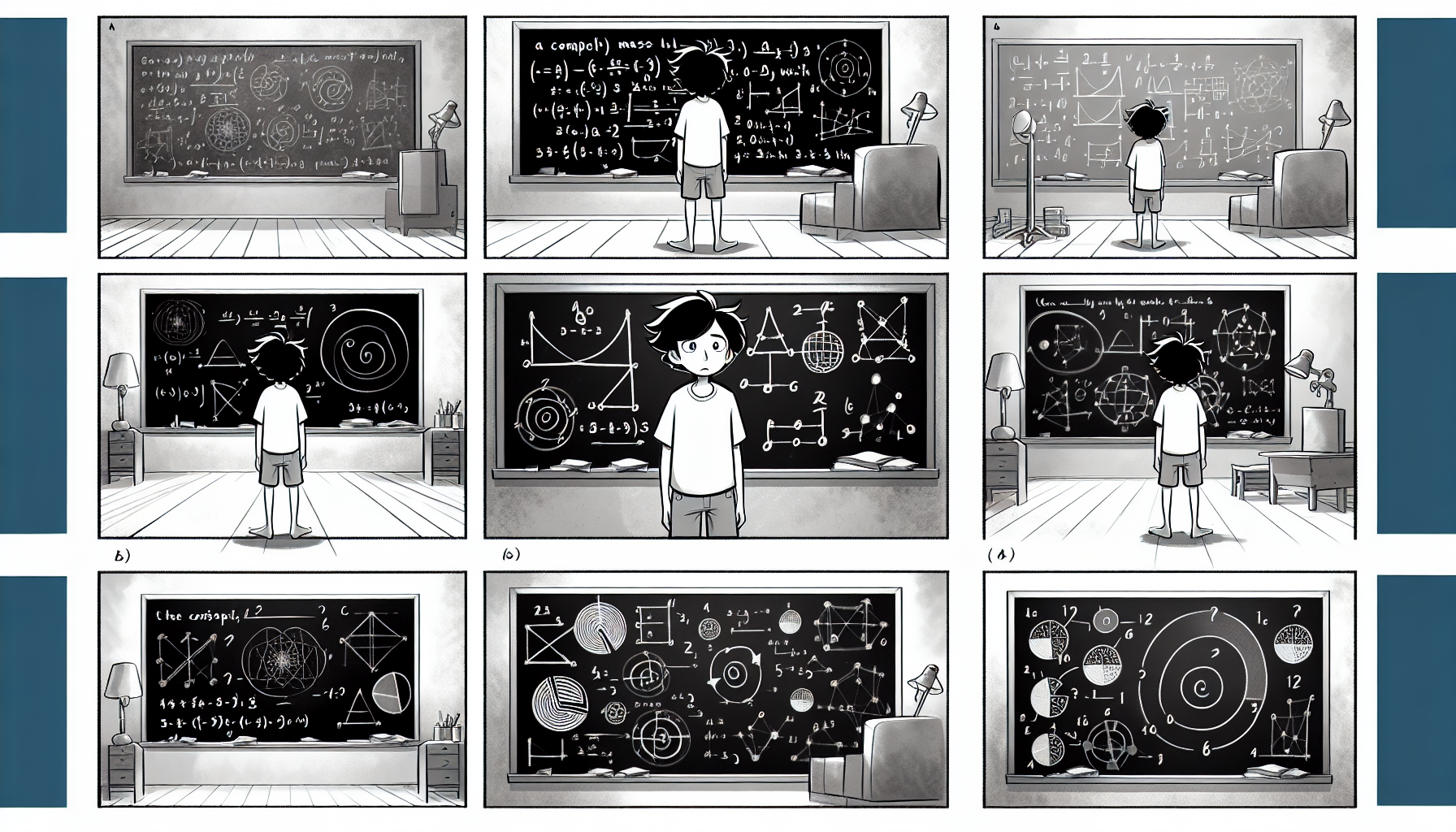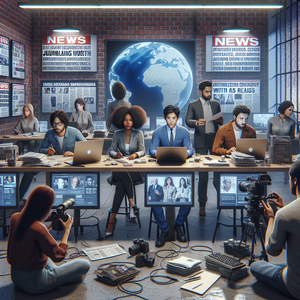The Rise of Multimedia Storytelling in Journalism Careers

The digital revolution has transformed how news is produced and consumed. Audiences are now more inclined to engage with content that provides a multi-faceted experience. According to a study by the American Press Institute, readers are more likely to retain information when it is presented through various media formats. As a result, journalists who can seamlessly combine text, images, audio, and video are at a distinct advantage. For instance, consider the success of news outlets like Vox and BuzzFeed. They have mastered the art of multimedia storytelling by integrating videos, infographics, and interactive elements into their articles. This not only makes their content more engaging but also enhances the overall user experience, encouraging readers to spend more time on their platforms. Vox, for example, often employs animated explainers to break down complex issues, making them more accessible to a diverse audience.
Enhancing Storytelling Capabilities
Multimedia storytelling allows journalists to convey complex narratives in a more digestible manner. By utilizing video clips, sound bites, and interactive graphics, journalists can evoke emotions and provide context that traditional text-based articles may lack. This approach is particularly effective in covering sensitive topics such as social issues, disasters, or personal stories. A notable example is NPR’s “StoryCorps,” which captures real-life stories through audio recordings and animations. These narratives resonate with audiences on a personal level, making them more impactful. The series not only showcases the power of audio storytelling but also illustrates how combining different forms of media can deepen audience engagement and understanding. By presenting personal stories in this way, StoryCorps creates a connection that transcends mere facts and figures, fostering empathy and reflection.
Boosting Employability in a Competitive Field
As the demand for multimedia content grows, so does the need for journalists who are proficient in these skills. Employers are increasingly looking for candidates who can produce high-quality content across multiple platforms. A survey conducted by the Pew Research Center found that 46% of journalism employers prioritize multimedia skills in their hiring processes. This trend underscores the necessity for aspiring journalists to build a diverse skill set that includes proficiency in multimedia storytelling. Aspiring journalists can enhance their employability by developing these skills through formal education, online courses, or self-directed learning. Platforms like Coursera and edX offer courses on video production, audio editing, and interactive design, making it accessible for anyone eager to learn. Additionally, creating a personal portfolio that showcases multimedia projects can significantly set candidates apart during job applications. For example, a recent graduate who has produced a documentary, crafted an interactive web story, and managed a podcast will likely stand out among peers with traditional text-based samples.
The rise of multimedia storytelling marks a pivotal moment in the evolution of journalism. As audiences seek richer and more engaging content, the ability to produce multimedia narratives has become indispensable. By embracing this trend, aspiring journalists can not only enhance their storytelling capabilities but also increase their employability in a competitive job market. As the landscape of journalism continues to evolve, those who adapt and innovate will lead the way in shaping the future of storytelling. In this dynamic environment, the journalist of tomorrow must be equipped not just with traditional reporting skills, but with a robust toolkit that includes multimedia storytelling techniques. In conclusion, the shift towards multimedia storytelling is not merely a trend but a necessary evolution in journalism. It represents an opportunity for journalists to connect with their audiences on a deeper level, making their work more relevant and impactful. As the industry continues to change, those who embrace multimedia storytelling will not only survive but thrive in this new era of journalism.
Multimedia Journalist
NPR, BBC, Vox, BuzzFeed
Core Responsibilities
Produce and edit news stories that integrate text, images, audio, and video across various platforms.
Collaborate with editors and producers to develop multimedia content strategies that engage audiences.
Conduct interviews, gather information, and verify facts to ensure the accuracy of all multimedia elements.
Required Skills
Proficiency in video editing software (e.g., Adobe Premiere Pro, Final Cut Pro) and audio editing tools (e.g., Audacity).
Strong storytelling skills with the ability to adapt narratives for different media formats.
Experience with social media platforms and understanding of how to leverage them for audience engagement.
Visual Journalist
Major newspapers, online news platforms, media agencies
Core Responsibilities
Create compelling visual content, including photographs, infographics, and illustrations to accompany news stories.
Work closely with reporters to visualize complex data and narratives for enhanced audience understanding.
Develop and maintain a strong visual style that aligns with the publication's brand identity.
Required Skills
Expertise in graphic design software (e.g., Adobe Illustrator, Photoshop) and knowledge of data visualization tools.
Strong sense of composition, color theory, and visual storytelling techniques.
Ability to work under tight deadlines while maintaining high standards of quality.
Podcast Producer
NPR, Wondery, independent podcast studios
Core Responsibilities
Research, script, and produce engaging audio content for a variety of podcast formats.
Conduct interviews, curate sound bites, and integrate music and sound effects to enhance storytelling.
Manage the production schedule and ensure timely release of episodes while coordinating with hosts and guests.
Required Skills
Proficiency in audio editing software (e.g., Pro Tools, GarageBand) and familiarity with sound design principles.
Strong communication skills and the ability to collaborate effectively with diverse teams.
Understanding of podcast distribution platforms and audience analytics to inform content strategy.
Interactive Content Developer
Digital news startups, tech companies, media organizations
Core Responsibilities
Design and develop interactive web experiences, such as data visualizations and interactive narratives, to accompany news stories.
Collaborate with journalists and designers to create user-friendly interfaces that enhance storytelling.
Analyze user engagement data to optimize interactive content based on audience preferences.
Required Skills
Proficiency in web development languages (HTML, CSS, JavaScript) and familiarity with interactive design tools (e.g., Adobe XD).
Strong problem-solving skills and an understanding of user experience (UX) principles.
Ability to work with data sets and transform them into engaging visual formats.
Social Media Strategist for News
News organizations, digital media companies, marketing agencies
Core Responsibilities
Develop and execute social media strategies that promote multimedia content and engage target audiences.
Monitor social media trends and audience feedback to adjust content strategies accordingly.
Collaborate with journalists to create shareable content and leverage multimedia elements for maximum impact.
Required Skills
Strong writing and editing skills, with the ability to create concise and engaging posts across platforms.
Proficiency in social media management tools (e.g., Hootsuite, Buffer) and analytics platforms (e.g., Google Analytics, Facebook Insights).
Ability to understand audience demographics and tailor content to meet their preferences.


